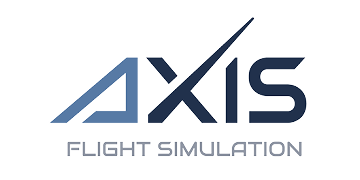
AXIS qualifies mainland Europe’s first Level-D CL350 full flight simulator
6. August 2024
AXIS qualifies mainland Europe’s first Level-D CL350 full flight simulator
6. August 202418. September 2024
From parts to pilots: How AXIS Flight Simulation builds its flight simulators
By Michaela Froelich, commercial director, AXIS Flight Simulation
Building a full flight simulator (FFS) requires a balance of cutting-edge technology, precision and deep industry knowledge. At AXIS Flight Simulation, we utilise three distinct methods to ensure that every simulator we build meets the specific requirements of our clients.
By tailoring our methods, we deliver devices that excel in performance, reliability and training effectiveness. Here's a glimpse into how we build our advanced FFS’.
The three simulator manufacturing methods
There are three primary approaches to building an FFS. Each serve different needs, while coming with its own set of unique advantages and challenges.
- Building a simulator with OEM hardware
One method involves integrating original equipment manufacturer (OEM) parts into the device, ensuring the highest levels of fidelity by using the same components found in an actual aircraft.
This approach can be expensive and complex when it comes to maintenance. Also, OEM parts often have long lead times and require stringent quality checks, making them challenging to work with.
- Rehosting avionics systems with custom-built hardware
For a greater balance between authenticity and cost, this approach involves rehosting the aircraft's original software on hardware designed by AXIS Flight Simulation. This delivers an authentic experience while offering easier maintenance and lower costs compared to a full OEM hardware FFS.
Through rigorous data collection and validation, we guarantee that the rehosted software behaves precisely like it would in the real aircraft.
- Replicating avionics systems with custom-built hardware
The third approach is achieved by creating both the hardware and software from scratch, emulating the aircraft systems with high fidelity. This method gives us complete control over the system's design, allowing for cost efficiency and customisation.
We recommend this approach for clients with specific training needs or budget constraints. While replicating systems is complex, our innovative team of engineers ensures that every detail meets the high standards of simulator qualification.
Tailored simulator manufacturing
It’s important to recognise that there is no ‘one-size-fits-all’ approach to simulator manufacturing, as each of the three methods provide their own benefits and potential challenges. Instead, it is necessary to customise the chosen manufacturing process based on the unique needs of each client.
For example, using OEM hardware enables us to completely replicate a real-life cockpit in the FFS. However, this method typically involves higher upfront costs and more complex maintenance over time.
Because the OEM parts are designed for aircraft, they can be over-engineered for simulation purposes and more difficult to source and replace. They also must go through an aircraft parts quality check, creating a lead time of up to six months, which can be derailed if the components are needed for jet maintenance. This means customers may need to wait longer to receive their simulator.
Alternatively, AXIS Flight Simulation-built hardware is designed specifically for the simulation environment, meaning that it is more cost-effective, easier to maintain and tailored for training purposes. Our hardware is built to work seamlessly with our systems, ensuring reliability and reducing downtime.
Using a rehosted avionics systems requires data from the aircraft avionics manufacturer including system interface, behavioural and failure mode data. We work closely with avionics manufacturers and operators to create a precise simulation environment when using this method.
We involve software engineers and pilots in the testing phase, allowing us to understand how the avionics systems communicate with each other. We can also get to know how the simulator will react to pilot inputs and simulated environmental conditions. The failure modes data also demonstrates how the aircraft systems will behave during failures, which is critical for accurate simulation.
Whether using OEM hardware for maximum realism, rehosting avionics systems for a balance between authenticity and cost, or replicating systems for flexibility and efficiency, every simulator must provide a first-class flight training experience.
Balance fidelity, cost and maintenance
We know how important it is to have a deep understanding of our client's priorities. If realism is the core focus, we might recommend OEM hardware or rehosting avionics systems. For those looking at cost efficiency, replication is often the best choice. And for those who prioritise ease of maintenance, we offer solutions that minimise long-term costs, such as our Technical Monitoring and Control System (TMCS), which can reduce maintenance time and effort.
Ultimately, every project is different and it’s imperative that the chosen manufacturing approach is customised to fit each client's specific needs. We ensure that our FFS’ offer the best possible performance within our customers budget and operational constraints.
Building a FFS is a complex process, but by combining deep technical knowledge with a passion for learning and adopting new technologies, we're able to deliver simulators that meet the highest standards of quality, performance and customer satisfaction.


